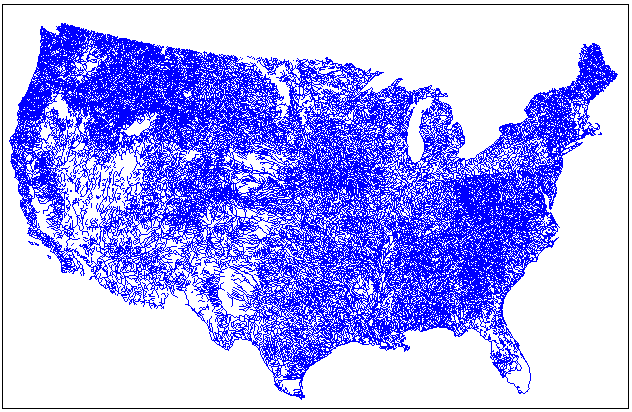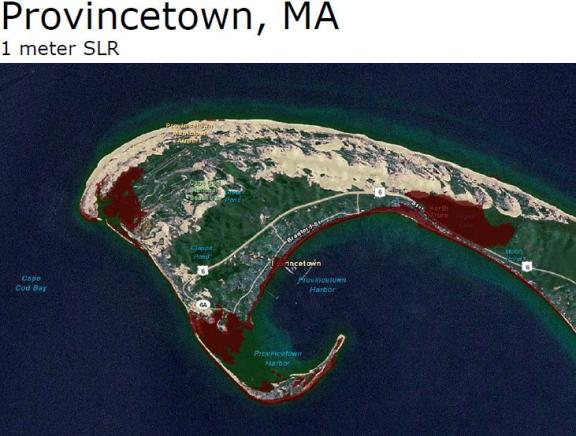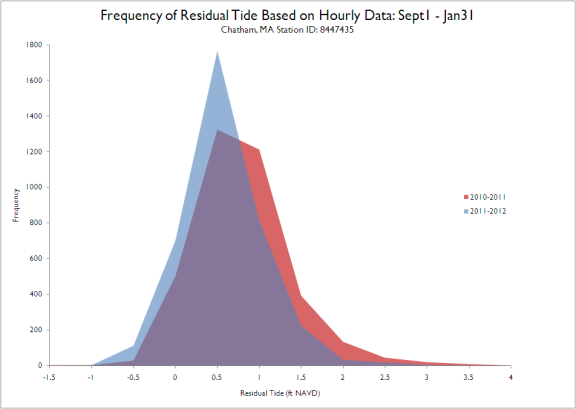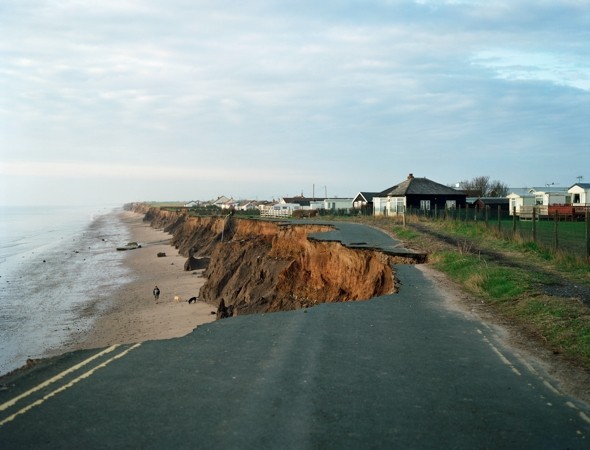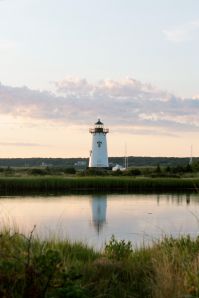It has been a busy winter here at Woods Hole Group. Waking up this morning to a dusting of snow here on the Cape, we were reminded that this winter has also been a mild one. And so we wondered if this milder winter has resulted in fewer and less intense storm-associated high water and wave events and, by extension, less shoreline erosion.
As a start, we decided to look at water levels by examining the residual tides at a nearby NOAA station between September 1 and January 31 of this winter and last winter. Residual tide is the difference between the elevation of the observed water level and the elevation of the predicted water level. NOAA makes tide predictions based on known factors that influence tidal height: gravitational pull of the moon and sun, coastal morphology, local water depth, and regional bathymetry. These predictions also assume average weather conditions. The observed water level may differ from the predicted water level when weather conditions are abnormal. Prolonged onshore wind and low barometric pressure systems (i.e. storms) drive sea level higher than predicted, thus positive residual tides (observed exceeds predicted) are indicators of higher than average coastal storm activity.
Here is a look at the hourly residual tides for Chatham, MA (NOAA Station 8447435) for 2010-2011 (red) and 2011-2012 (blue):
It appears that there were a few more major storm events during 2010-2011 (red peaks) than during 2011-2012 (blue peaks). Also, on average the residual tide during 2010-2011 (red line) was higher than during 2011-2012 (blue line), meaning there was a greater difference in observed vs. predicted water levels last winter than this winter.
Here’s another way to look a the data:
We see in this histogram that there was a lower frequency of larger residual tides in the 2011-2012 season than in the 2010-2011 season. The shift in the curve from right to left (red to blue) indicates that storms affecting Chatham were less intense this winter than they were last winter.
We haven’t determined if these differences are significant, and a look further back into the historical record would provide a better perspective than this snapshot investigation, but the data are consistent with our anecdotal experience this winter. Whether or not this relatively calm winter will spare our shoreline from excessive erosion remains to be seen. Reports from some hotly contested cabins on Chatham’s North Beach Island indicate that so far, the seas have been merciful.
What has this winter brought to your area? More storms or fewer storms? More erosion or less erosion than usual? Reports from the field are always welcome.
 For this reason, we have developed an iPhone app and a voice/text reporting system to track these events and hopefully obtain fresh samples for analysis. We’ve already fielded a handful of reports so far this year, one of which yielded a bluefish for necropsy by our team of researchers. As we collect more data, we hope to get to the bottom of this disconcerting phenomenon. So, please, be our eyes out on the water this summer – download the mCrowd app (‘Buzzards Bay Fish Mortality’ is a task within this app) and become a citizen scientist.
For this reason, we have developed an iPhone app and a voice/text reporting system to track these events and hopefully obtain fresh samples for analysis. We’ve already fielded a handful of reports so far this year, one of which yielded a bluefish for necropsy by our team of researchers. As we collect more data, we hope to get to the bottom of this disconcerting phenomenon. So, please, be our eyes out on the water this summer – download the mCrowd app (‘Buzzards Bay Fish Mortality’ is a task within this app) and become a citizen scientist.






